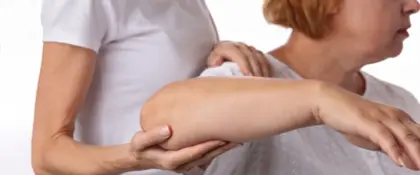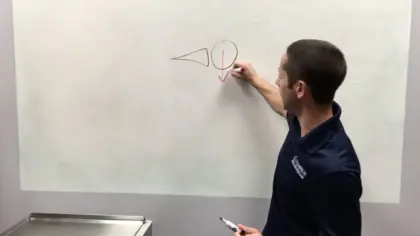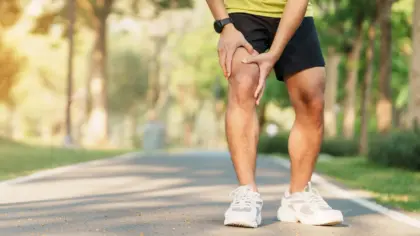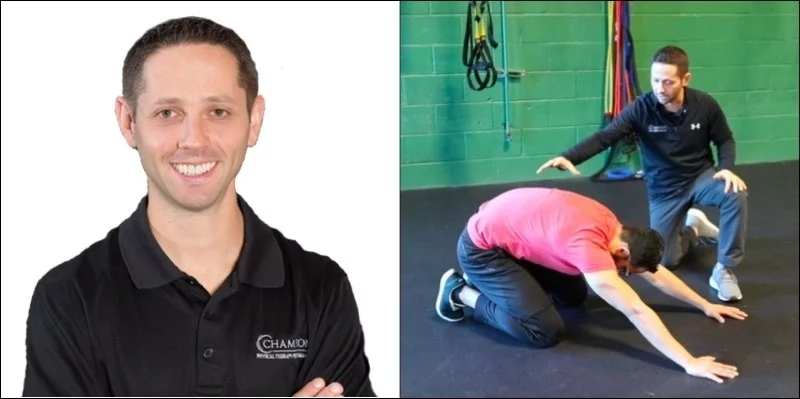TRXスクワットバリエーションの生体力学
身体運動のプロフェッショナルが集う最高のコミュニティに参加しよう
他では手に入らない、翻訳されたグローバルな情報源から学びましょう。
無料アカウントを登録して、7日間の無料トライアルアクセスをお楽しみください。
The TRX Suspension System is a pretty cool piece of exercise equipment that has some obvious (i.e. rows!) and not so obvious uses. The strength community has shown us tons of great uses of the TRX, but I also personally use the TRX many ways within my rehabilitation programs.
Here is a video of some simple variations to the squat that can be performed by using the TRX. I’ll explain more about why I use these TRX squat variations below, but take a look at the clip first:
TRXサスペンションシステムは、ロウイング等の分かり易い使用方法と、思いがけない使用方法の両方をもつ、優れたエクササイズ器具です。ストレングスコミュニティでは、沢山の素晴らしいTRXの使用方法が紹介されていますが、私も個人的にリハビリテーションプログラムの中で、様々な方法でTRXを使用しています。
このビデオでは、TRXを使って行えるスクワットの簡単なバリエーションを紹介しています。何故私が、これらのTRXのスクワットバリエーションを使っているのか、更に詳しく説明をしますが、まずはこのビデオを見てみてください。
(This video does not contain any audio track, visual only.)
Muscle Activity During Squats
Biomechanical studies have shown that altering your center of gravity impacts the resultant muscle activity ratios between the quadriceps and hamstrings. This was demonstrated well in the classic 1996 study by Wilk, Escamilla, and Fleisig published in AJSM. The authors compared squatting and leg press and found that the plane of orientation of the body produced a significant effect on muscle activity.
During the upright squat, when the center of gravity is fairly neutral, the quadriceps and hamstring muscle groups produced a relative amount of co-contraction during the concentric portion of the exercise.
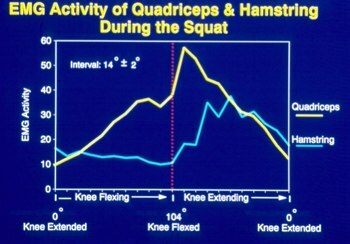
However, when the leg press was performed and the center of gravity was positioned posteriorly, the contribution of hamstrings to the activity was significantly less:
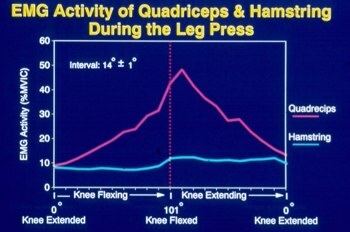
Basically when performing an exercise where you center of gravity is posterior, such as a leg press or wall squat, you will increase quadriceps activity and decrease hamstring activity. Conversely, if you lean forward during a squatting motion, you will increase the hamstrings contribution. Lastly, a neutral squat with a neutral center of gravity will produce co-contraction of the two muscles.
TRX Squat Variations
These biomechanical findings can be used to alter the ratio of quadriceps to hamstrings during the squat as needed. Clinically, there are times during the rehabilitation process where this may be beneficial.
For example, a patient recovering from ACL reconstruction surgery may benefit from performing neutral squats to facilitate co-contraction and stability of the knee. A patient with a PCL injury may want to perform squats from to neutral to posterior to their center of gravity to reduce hamstring contribution and the potential for posterior shear forces. If you want to facilitate posterior chain involvement during the squat and emphasize hip extension, you may want to lean forward and work on this motor control pattern.
As you can see there are a lot of potential clinical implications.
Using the TRX to perform these squats is very helpful, especially during the early phases of rehabilitation. The TRX suspension system can take some weight off the squat, enhance balance so the patient can shift their center of gravity more anterior or posterior, and serves as what I like to call “training wheels” to help perform a squat correctly when movement dysfunction exists. Just a small reduction in body weight can enhance motor control and help movement quality during the squat. As the person’s motor control improves, they can ween off the TRX “training wheels.”
What do you think? How have you used the TRX during rehab? These are just a few examples of how using the TRX suspension system can help us tweak an exercise like the squat. Understanding the biomechanics of the squat and what happens on the inside during these TRX squat variations will help us build better programs for our patients and clients.
(このビデオには音声が収録されていません。映像のみです。)
スクワットを行っている時の筋活動
重心を変えることは、結果として生じる大腿四頭筋とハムストリングの間の筋活動の比率に影響を与えることが、生体力学の研究により示されています。これはAJSMの中で発表された、1996年のウィルク・エスカミラとフレイシグによる研究によって、しっかりと証明されて、います。執筆者たちはスクワットとレッグプレスを比較し、身体の向きの面が筋活動に多大に影響を与えることを発見しました。
直立でのスクワットにおいて、重心がほぼニュートラルの時、エクササイズのコンセントリックの部分において、大腿四頭筋とハムストリング筋群には相対量の共収縮が生み出されました。

しかしながら、重心を身体後方においてレッグプレスを行っている時、その活動に対するハムストリングの貢献度はきわめて少ないものでした。

レッグプレスやウォールスクワットなど、基本的に重心を身体後方においたエクササイズを行っている時、大腿四頭筋の活動は増加し、ハムストリングの活動は減少します。逆に、スクワットの動きを行っている間に前傾すると、ハムストリングの活動が増加します。最後に、ニュートラルの重心でのニュートラルなスクワットでは、2つの筋肉の共収縮が起こります。
TRXスクワットバリエーション
これらの生体力学的な発見は、スクワットを行っている間の大腿四頭筋とハムストリングの比率を、必要に応じて変えることに利用することができます。臨床的には、リハビリテーションの過程において、これが役立つ適切な時期があります。
例えば、ACL再建手術から回復中の患者は、ニュートラルスクワットを行うことにより共収縮と膝の安定性を促進する、という恩恵を受けることができます。PCLの外傷を持つ患者は、ハムストリングの活動と後方への剪断力を減らすために、ニュートラルから後方にかけての重心で、スクワットを行うのが良いかもしれません。スクワットを行いながら、身体後面の筋活動を促進し、股関節の伸展を強調したい場合は、前傾することで、この運動制御パターンに働きかけるのが良いかもしれません。
このように、臨床で実践することのできる、多くのポテンシャルを持っています。
TRXを使って、これらのスクワットを行うことは、特にリハビリテーションの初期段階において、とても役立ちます。TRXサスペンションシステムはスクワットでの負荷をいくらか取り除きバランスを向上させるので、患者は重心を前や後ろに動かすことが可能になり、また、動きの機能障害がある場合、TRXサスペンションシステムはいわゆる「補助輪」としてスクワットを正しく行う手助けをしてくれます。少しでも自重が減少することは、運動制御を促進し、スクワットを行っている間の動きの質を高めることに役立ちます。そして、その人の運動制御が向上するに従い「補助輪」を外していくことができます。
いかがですか?リハビリテーションの中でTRXをどのように使用したことがありますか? これらはTRXサスペンションシステムを使うことによって、いかにスクワットのようなエクササイズを変化させることができるか、といったいくつかの例です。スクワットの生体力学と、これらのTRXスクワットバリエーションにおいて、身体の中では何が起こっているのかを理解することは、私たちの患者や顧客に対して、より良いプログラムを作成することを助けてくれます。
身体運動のプロフェッショナルが集う最高のコミュニティに参加しよう
他では手に入らない、翻訳されたグローバルな情報源から学びましょう。
無料アカウントを登録して、7日間の無料トライアルアクセスをお楽しみください。
